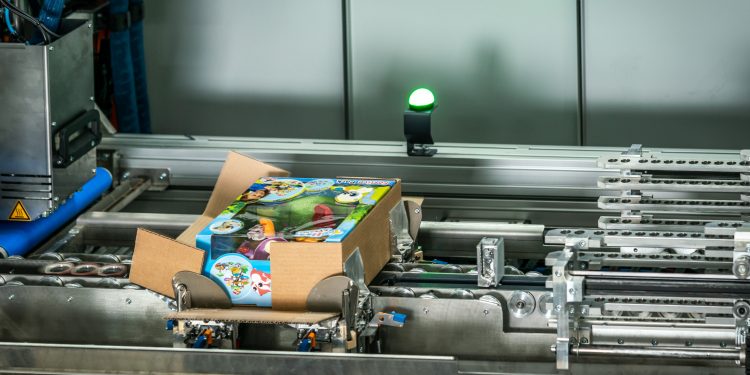Right-Size Your Packaging

Sustainability efforts require a multi-faceted approach, and packaging is one big piece of the puzzle.
Sustainability is becoming a core competency for many companies, and there are multiple methods to do better by the planet. Within the world of warehousing and transportation, packaging is one of the easiest and most impactful ways to accomplish those goals. The makers of packaging equipment are stepping up their efforts in this regard, too, pushing right-size packaging into the forefront.
Much of the demand for better packaging is driven from consumers. With the increase in ecommerce and home deliveries, consumers are shunning big, oversized boxes and cartons full of packing materials and voids. Instead, when given an option by the online retailer, they often opt to have their packages consolidated, even choosing a later delivery if it means improved sustainability. In fact, one recent survey found that nearly 80 percent of customers who regularly receive home deliveries stated they care about right-sized packaging. You stand to lose customers if you’re not meeting their demands.
The final 100 feet of your warehousing operations—the areas where you scan, label, apply and manifest (SLAM)—provides an ideal spot to right-size your packaging. Automation in this section can help you better match your packaging to your customers’ demands. Advanced software and innovative equipment in this area allows you to create custom-sized boxes with no wasted space. Your products will be better protected by removing the excess volume and right-sizing the package. This can reduce or eliminate the need for fill and leads to an entire host of improved outcomes including reducing manual packing stations, improved sustainability, and minimized transportation costs.
Automated, right-sized packaging begins when an employee places an order, for single or multiple items onto the induct conveyor. A scanner dynamically captures a 3D image of those items which are used to cut and crease the corrugate as it moves through the equipment to produce a right-sized, custom-made corrugated box just for that order. In one fell swoop, the equipment auto-boxes the order. It then moves down the conveyor to be sealed, weighed, and labeled in a fully integrated solution. All of these processes are accomplished at higher productivity levels and with fewer employees than manual operations, increasing the benefits of the equipment.
Many large retailers are adopting these practices, but so too are mid-sized and small-sized companies. A combination of customer demand and the desire to operate in a more sustainable fashion is behind the demand for right-sized packaging. The automation also helps these companies keep pace as ecommerce demands and expectations continually dictate they move product out the door faster every day.
In addition to aiding in sustainability efforts, right-sized packaging benefits your bottom line. You can greatly reduce your spending on packaging materials and labor, for instance. You’ll also speed up your packaging operations, improving productivity, and reduce the amount you spend on transportation as you’ll avoid shipping empty space, and also waste no space on trucks, either. And when you leave your customers happy with the packaging along with the products they receive, they’re more likely to stick with you over a competitor. Right-sized packaging solves a host of problems, and everyone wins from its application.
The MHI SLAM Industry Group is conducting a survey to better understand the challenges and opportunities facing the ecommerce fulfillment operations. As a practitioner in this field, your insight and experiences are of utmost importance to us. We would be grateful if you could spare a few minutes to share your thoughts and opinions through this survey. Your participation will contribute to shaping the future of the industry.
To learn more about MHI’s SLAM industry group: www.mhi.org/slam
More information about Scanning, Labeling, Applying, Manifesting:
How SLAM Saves on Shipping Costs
Prevent Chargebacks Via SLAM Equipment
Why SLAM Should Include Dimensioning Equipment
Handling Every Type Of Packaging
Best Practices For The Last 100 Feet Of Fulfillment
Why A Vertical Reciprocating Conveyor Can Play A Critical Role …



